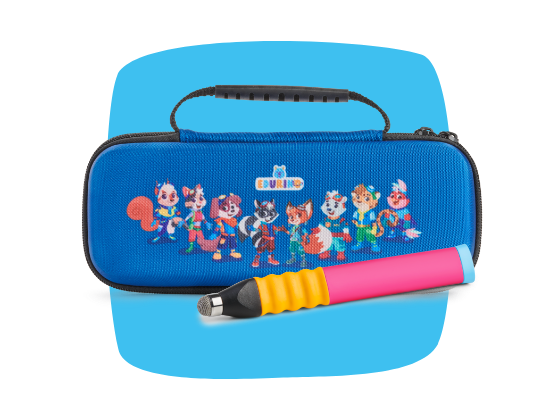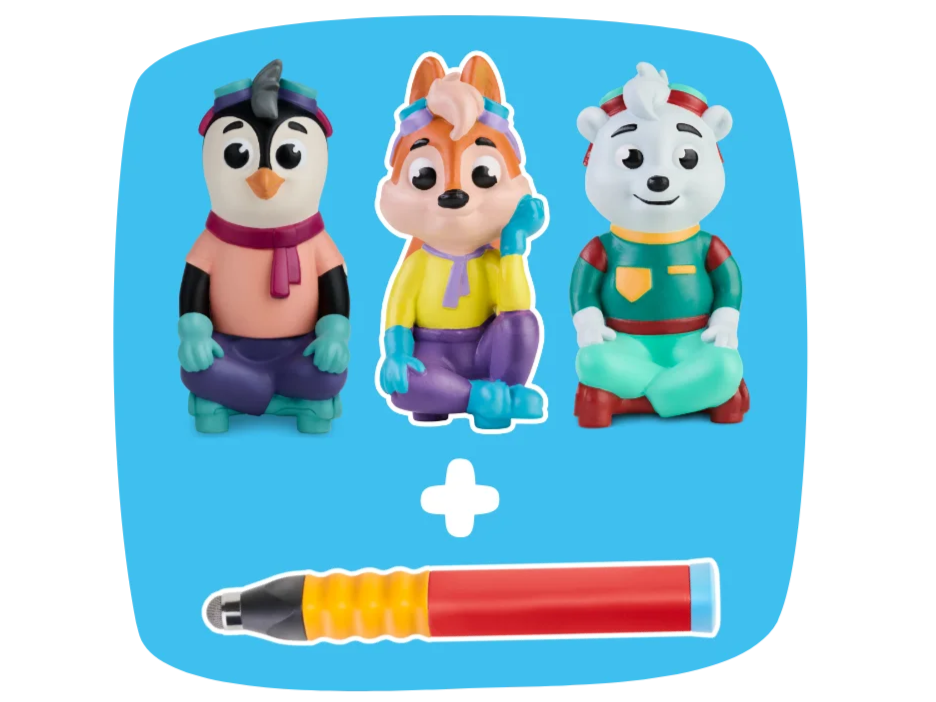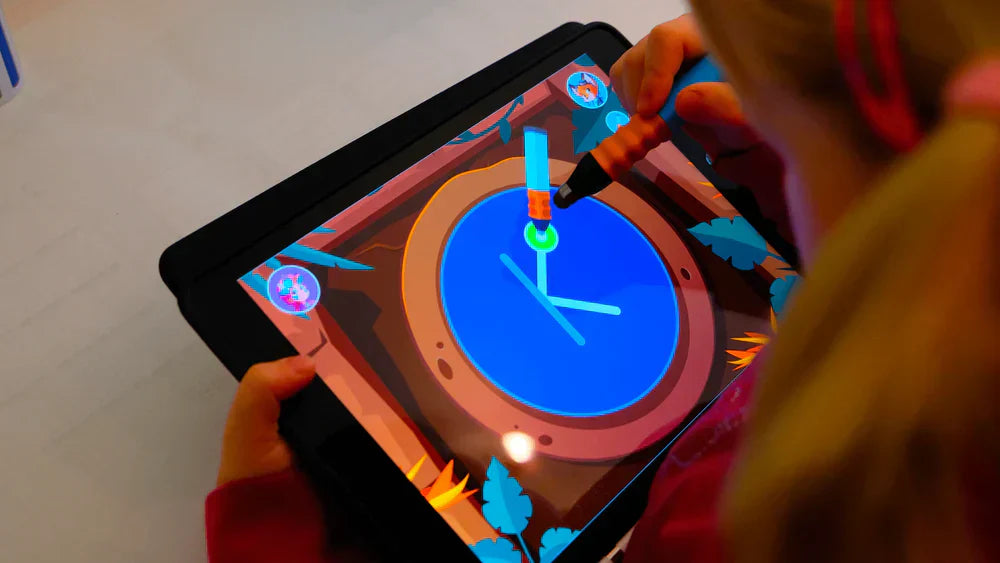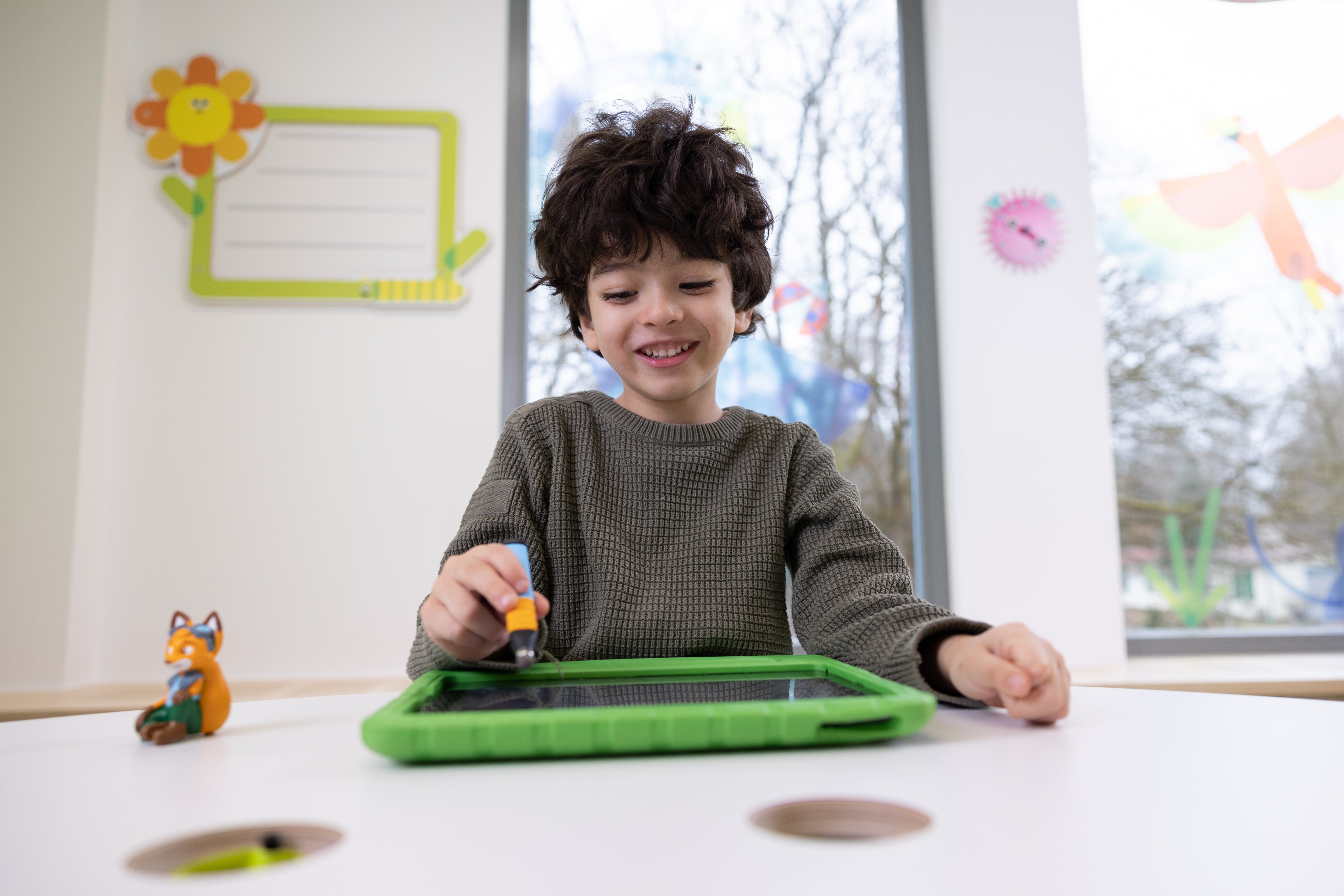Our tips for learning to write better
How can we motivate our children to write? We'll give you five tips for supporting your child's graphomotor skills and demonstrate that it's not just about correct pen grip, adequate finger pressure, and fine motor skills, but also about overall posture, various writing opportunities, and, last but not least, a whole lot of fun!
1. Create opportunities to write
2. Motivate instead of exerting pressure
3. Correct pen grip
4. The optimal sitting posture
5. The best leaf position
6. Learning through play
1. Create opportunities to write
We're not the only ones who hear the saying "practice makes perfect" from our parents. The studies mentioned above have also shown that regular training improves both fine motor skills and graphomotor and writing skills. It's a good idea to vary the occasions for writing and thus provide variety. Whether you choose motifs based on the seasons and holidays as a prompt or use different writing instruments such as colored pencils or crayons, paintbrushes, or your own fingers – anything that's fun and provides variety is allowed.
2. Motivate instead of exerting pressure
Especially when a parent sits down with their son or daughter to practice writing or drawing, they may be inclined to focus on correct execution right from the start. Form and precision should not be the main focus at first, as the movements cannot be executed precisely at the beginning. It's like walking: In the beginning, you fall over a lot until you finally find the right balance. And the same should be true for writing. Instead of tracing letters and shapes with pinpoint accuracy and in slow motion, children should be able to draw with enthusiasm and creativity right from the start. In this way, the correct finger pressure and appropriate pencil grip can be practiced with the child. Little by little, their own motivation to connect different dots, playfully trace different lines, or imitate the handwriting of adults will arise quite naturally.
3. Correct pen grip
Our fox Mika demonstrates it correctly: Place the writing instrument, the first third of the way up from the writing tip, loosely on the thumb of your left or right hand. Then, place the tip of your index finger on the upper side of the writing instrument and hold it firmly with both fingers. Then, rest the pen on your middle finger and let the remaining fingers rest loosely. It's that simple!
4. The optimal sitting position
Even though we primarily focus on our pen and hand position when writing, proper positioning on the chair is essential. Children who are concentrating intensely often tend to squint, tangle their legs under the desk, and almost touch the paper with the tip of their nose. Here, you can consciously focus on maintaining a relaxed sitting posture. Your back should be straight, your feet should touch the floor, and your arms and legs should each be bent at a 90-degree angle—just like we adults do at work.
5. The best leaf position
There's a little tip for the page position, depending on your hand preference. For right-handed people, it's recommended to rotate the writing surface in front of you about 30 degrees counterclockwise. Left-handed people can even rotate their writing surface up to 45 degrees – this way, your writing isn't obscured by your writing hand and you prevent the ink from potentially smudging.
6. Learning through play
And the most important thing comes last: Every child is unique and develops at a different rate. Accordingly, every child learns to write at their own pace. It's important to stay positive, motivate your child, and, above all, not forget to have fun!









